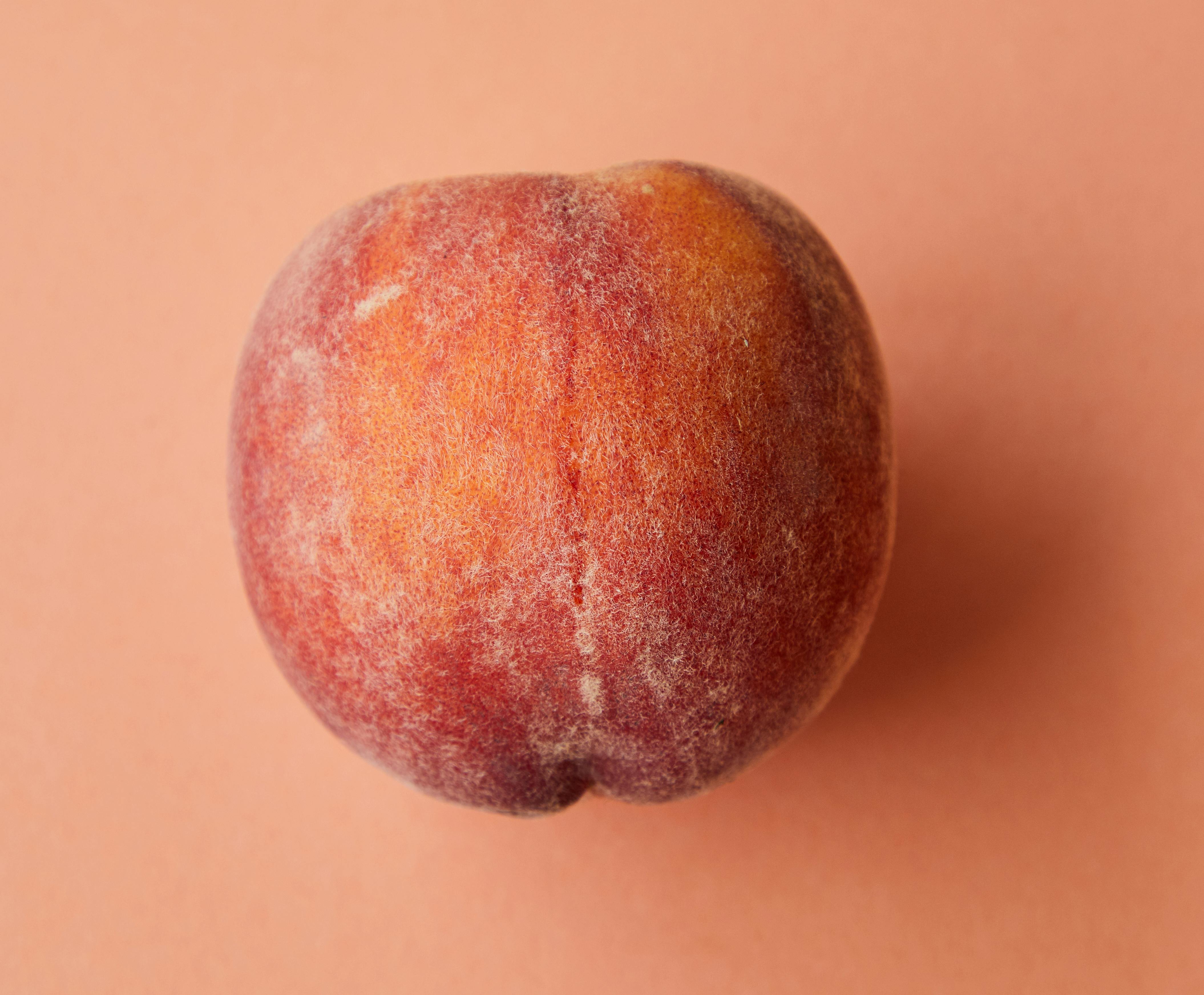Baobab fruit, sometimes referred to as monkey bread, is a highly nutritious and unique tasting fruit native to Africa. The exotic fruit has a tart, citrus-like flavor. It can be eaten raw or used in juices, smoothies, sorbets, and other culinary applications. In this article we will discuss what baobab fruit tastes like and how you can incorporate it into your diet.A Baobab Fruit is a large, round, dry fruit found in Africa, Australia and Madagascar. It has a hard shell and is filled with an edible pulp that is high in vitamin C and other essential nutrients. The pulp can be eaten raw or used to make juices, smoothies, jams and other products. The seeds of the Baobab are also edible and have a nutty flavor.
What Does the Baobab Fruit Look Like?
The baobab fruit is an unusual looking fruit that is found in Africa, Madagascar, and Australia. It has a thick brown husk that contains a powdery white pulp inside. The baobab fruit has a tart flavor and can be eaten raw, or dried and used in cooking or baking. The fruit also contains a lot of nutrients, including Vitamin C, potassium, magnesium, and calcium.
The baobab tree itself is known for its distinctive shape with a trunk that bulges out at the bottom like an elephant’s foot. It can grow to be up to 30 meters tall and live for thousands of years. The tree produces large yellow flowers that are pollinated by bats and other animals.
The baobab fruit hangs from the tree in large clusters and is ready to harvest when it becomes dry and brittle. The husk of the fruit can then be easily cracked open to reveal the powdery white pulp inside. This pulp can be eaten as-is or dried into a powder that can be used for baking or making smoothies.
In addition to being eaten raw or dried, the baobab fruit is also processed into a variety of products such as juice, jam, ice cream, beer, wine, and even cosmetics. It has become increasingly popular in recent years due to its health benefits such as being high in Vitamin C and antioxidants as well as its unique flavor profile.
Overall, the baobab fruit looks like an unusual looking brown husked fruit with white powdery pulp inside. It has a tart flavor and contains many beneficial vitamins and minerals making it an excellent addition to any diet. Its popularity has been increasing over recent years due to its health benefits as well as its unique flavor profile which makes it ideal for use in various recipes from jams to juices to ice cream!
Where Does the Baobab Fruit Grow?
The baobab fruit, native to Africa, grows on the Adansonia digitata tree, one of the eight species of baobab trees that are found in Africa, Australia, and Madagascar. The fruit is also known as monkey bread or cream of tartar tree fruit. The baobab tree can reach heights of up to 30 meters and can live for thousands of years. It is an iconic African tree with a thick trunk and a wide crown that often looks like an upside-down root system. Baobab trees grow in dry climates in areas where there is little rainfall or water. They are drought-tolerant trees that can survive in arid regions where other plants would not be able to survive.
The baobab fruit is known for its high nutritional value and has been used for centuries by African communities as a food source. The baobab fruit is rich in antioxidants, vitamins, and minerals such as calcium, magnesium, potassium, iron, zinc, selenium, and niacin. It has an acidic taste similar to lemon or grapefruit and can be eaten raw or cooked into a paste or powder form. It can also be used to make juices and smoothies or added to baked goods such as breads and cakes. The leaves of the baobab tree can also be eaten when cooked into soups or stews.
In many parts of Africa the baobab tree is considered sacred because it provides food sources during dry seasons when other food sources may not be available. In addition to being used for its nutritional benefits it has many medicinal uses including treating fever, malaria, stomach aches, diarrhea, colds and flu symptoms. In African culture the baobab tree is seen as a symbol of strength and resilience due to its ability to thrive in harsh conditions where other plants cannot survive.
How Does the Baobab Fruit Taste?
The baobab fruit has a unique and complex flavor that combines sweet, tart, and citrusy notes. It has a thick, fibrous texture, similar to that of an apple, and its flavor is often compared to that of a pear or grapefruit. The taste of baobab can vary depending on the variety and ripeness. Riper fruits tend to be sweeter with an intense citrus flavor. Under-ripe fruits can have an acidic and bitter taste. The pulp of the fruit is often used in smoothies or as a topping for desserts. It can also be used in jams and sauces or as a flavoring agent in baking recipes. Baobab powder is also popularly used for its nutritional benefits, with its unique flavor adding a special zing to any dish.
Nutritional Benefits of Eating a Baobab Fruit
The baobab fruit, native to the African continent, is becoming increasingly popular as a superfood due to its high nutritional content. This unique fruit has an impressive nutrient profile, containing a wealth of vitamins, minerals, and antioxidants. It is also low in calories and fat, making it an ideal addition to a healthy diet. Here are some of the key nutritional benefits of eating a baobab fruit.
Baobab contains high levels of vitamin C, which helps support the immune system and aids in collagen production for healthy skin and hair. It also contains other essential vitamins such as A, B1, B2, B6 and E. Furthermore, it is a good source of calcium and iron which are important for healthy bones and teeth.
Baobab is rich in dietary fiber which helps keep digestion regular and can help reduce cholesterol levels. It also contains several phytochemicals which possess antioxidant properties that can protect against cell damage from free radicals. Additionally, baobab is packed with antioxidants such as anthocyanins and polyphenols that can help reduce inflammation in the body.
Baobab fruit is naturally sweet with a distinctive flavor that lends itself well to many recipes. It can be enjoyed fresh or dried and used in smoothies or salads or added to baked goods for extra nutrition. The dried powder form is especially versatile as it can be added to juices, yogurts or sprinkled on cereal or oatmeal for extra nutrients.
Eating baobab fruit can provide numerous health benefits due to its nutrient-rich composition. With its high levels of vitamins and minerals along with its antioxidant content, this superfood can be an excellent addition to any healthy diet.

Different Ways to Eat a Baobab Fruit
Baobab fruit is packed with health benefits and is becoming increasingly popular in different parts of the world. This exotic fruit is an excellent source of vitamin C, calcium, iron, and dietary fiber. The unique flavor and texture make it a great addition to any meal. There are several ways to enjoy this delicious fruit.
One way to eat a baobab fruit is to simply cut it in half and scoop out the flesh with a spoon. This method preserves the unique flavor and texture of the fruit while still allowing you to enjoy its full nutritional benefits. You can also blend the flesh into smoothies or other recipes for an added boost of nutrition.
Another popular way to enjoy baobab is to make it into a juice or smoothie. Simply blend the flesh with some water or juice, sugar or honey if desired, and some ice cubes for a refreshing beverage that packs in plenty of nutrients. You can also add other fruits or vegetables for an even more nutritious drink.
For those who prefer their baobab on the sweeter side, you can create a simple syrup by boiling equal parts water and sugar until it thickens. Once cooled, this syrup can be mixed with freshly squeezed baobab juice for a delicious drink that’s perfect for hot summer days.
You can also add baobab powder to your favorite baked goods like muffins or cookies for an added boost of nutrition and flavor. The powder has all of the same health benefits as fresh baobab but with none of the mess! It’s easy to store too – just keep it sealed in an airtight container away from heat and light sources.
Finally, you can use dried baobab pieces as an interesting addition to salads or other dishes that call for dried fruits as ingredients. The chewy texture adds texture and flavor without overpowering other ingredients in the dish – making it perfect for adding just a hint of exotic sweetness without going overboard on sugar.
No matter how you decide to enjoy this amazing superfood, you are sure to reap its many health benefits while indulging in its unique flavor and texture! So go ahead – explore different ways to eat a baobab fruit!
What is a Baobab Fruit?
Baobab fruit is a unique and nutrient-dense superfood that grows on the African baobab tree. Native to Africa, Madagascar, and Australia, the fruit has a hard outer shell that resembles a coconut. Inside, it has a white pulp that’s full of dietary fiber, antioxidants, vitamins and minerals. It’s also high in potassium and calcium. Baobab fruit has been used for centuries as an energy boost and for its many health benefits.
How to Buy Baobab Fruit
Baobab fruit can be purchased at local health food stores or online from specialty retailers. When buying baobab fruit, look for ones that are dry and firm to the touch. Avoid any fruits that are overly soft or have dark spots on them as this could signify spoilage. It’s also best to buy from reputable sources as the quality of baobab fruit can vary greatly.
How to Store Baobab Fruit
Once you get your baobab fruit home it should be stored in a cool, dry place away from direct sunlight. The best way to store it is in an airtight container or bag. It should keep for several weeks if stored properly. You can also freeze baobab fruit for longer periods of time if needed.
Using Baobab Fruit
Baobab fruit can be eaten raw, but it has a tart flavor so it’s often used in smoothies or juices to add sweetness and nutrition. It can also be dried and crushed into powder form which makes it easy to add to recipes or smoothies. It can even be used as an ingredient in baking recipes such as cakes and muffins.
Interesting Facts About the Baobab Fruit
The baobab fruit is a unique and intriguing fruit with a wide range of uses. Native to Africa, Madagascar, and Australia, the baobab tree produces a large, round fruit that is packed with nutrition and flavor. Here are some interesting facts about this remarkable fruit:
The baobab fruit has an impressive amount of antioxidants, which can help protect against disease and improve overall health. The pulp of the fruit also contains vitamins A, C, B6, potassium, calcium, magnesium, phosphorus and iron.
The baobab tree can live for up to 1000 years and is known as the “Tree of Life” due to its ability to provide food and shelter for many different species. It is also considered an important part of African culture and tradition.
The baobab tree is drought-resistant and can thrive in harsh conditions such as extreme temperatures or arid soils. This makes it well suited to the African climate where it is most commonly found.
The baobab fruit has a unique taste that has been described as “tangy” or “tart” with a hint of citrus flavor. It has a powdery texture when dried and can be used in many different recipes such as smoothies, juices, jams or even baked goods.
When ripe, the baobab fruit turns from green to brownish-red in color. It can be eaten raw or processed into powder form for use in other recipes. The leaves of the tree are also edible but have a bitter taste so they are usually cooked before eating.
Baobab oil is extracted from the seeds of the fruit and has many uses including skin nourishment as well as hair care products such as shampoos and conditioners. The oil is rich in omega fatty acids which promote healthy skin cells while providing moisture to dry hair strands.
Overall, the baobab fruit offers an abundance of health benefits thanks to its high antioxidant content and nutritional value. It has been used by cultures around the world for centuries for its culinary uses as well as medicinal properties – making it truly one of nature’s superfoods!

Conclusion
The baobab fruit is a unique and interesting fruit. It has a tart, citrusy flavor that some people find refreshing and others find too sour. It is high in antioxidants, making it a great addition to smoothies or other dishes. It can also be dried and made into powder for baking or cooking applications. The baobab is an incredibly versatile fruit with numerous health benefits.
Overall, the baobab fruit is an interesting and nutritious addition to any diet. Its unique flavor may take some getting used to, but its many health benefits make it worth trying at least once! With its versatility, you can incorporate the baobab into smoothies, teas, baked goods, and more. Give it a try today!



